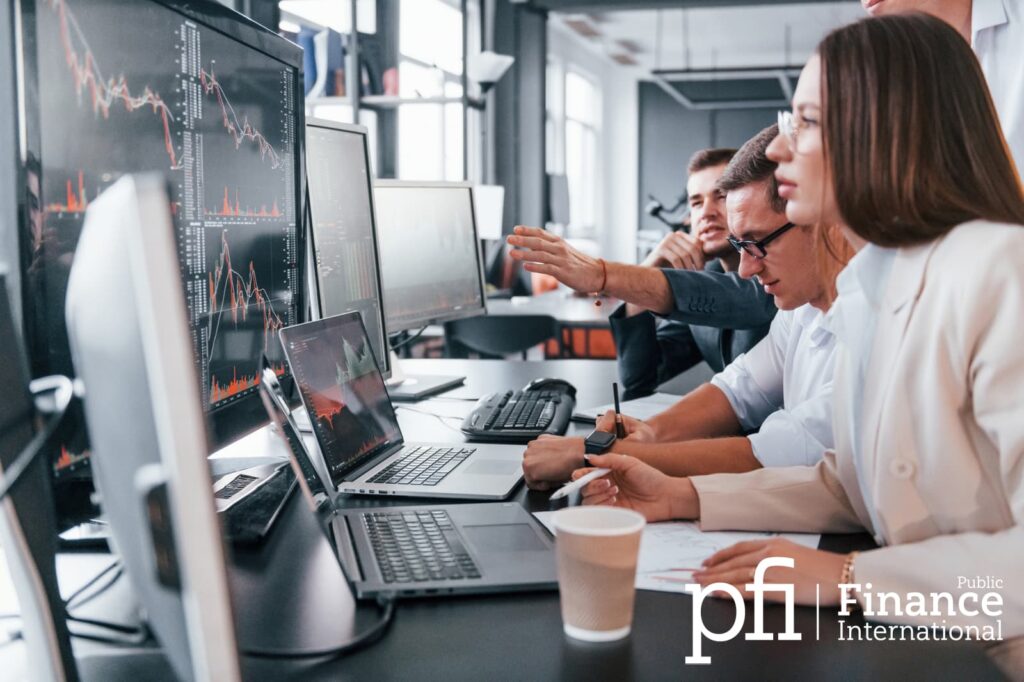A trading room, also known as a front office or dealing room, is essentially an office space where buying and selling of financial products take place.
All trades used to happen in a trading room, a physical location where trading occurred. Trading activities are now mostly completed on electronic platforms rather than actual trading rooms, leaving behind the trading rooms as more of a sign of the financial market. Continue reading to learn more about trading rooms, what they look like, what tools traders used in the trading rooms, and how they were set up in the early years.

What Does A Trading Room Look Like?
The original trading rooms were physical spaces where traders could come to buy and sell stocks, bonds, commodities, currencies, and other securities.
Today, most stock exchanges no longer have physical trading rooms. Instead, all transactions are handled electronically. However, some exchanges, such as the New York Stock Exchange (NYSE), still have a physical trading room where traders can come to buy and sell stocks.
It’s typically a large, open space with plenty of computer screens, monitors, telephones, and tools traders use to make decisions about trading financial instruments. The layout of a room may vary depending on the firm, but typically there is a desk for each trader with a seat, phone, and computer. There may also be space for a team of traders to work together and private offices for managers.
A trading room usually has several monitors that display different aspects of the market, along with various other tools that traders use to make decisions. The room may also have a television or other media device so traders can stay up-to-date on news that might affect the markets.
Some trading rooms are very small, with just a few people, while others are much larger. In addition to human traders, there may also be computers in the room that are used for automated trading.
Trading rooms are found in the offices of investment banks, trading organizations, and other financial institutions. They're often staffed by multiple traders who work together to make decisions about buying and selling. Some trading rooms also have specialized software that allows traders to track market data and place orders electronically.
Universities and schools build trading rooms for finance students to give them a genuine sense of what working in the financial market is really like.
Tools
In the days before electronic trading, traders would shout orders across the room and wave their arms to get the attention of others. This was inefficient and led to many misunderstandings. Later in the 1920s, exchanges began using telephones to connect buyers and sellers. This system was also inefficient, as traders could not see the order book or trade with other market participants.
In the 1970s, exchanges began using computers to connect buyers and sellers. This system was much more efficient than previous methods and eventually led to the demise of the trading rooms.
Set Up In The Early Years
Trading rooms in the early years were much different than they are today. For one, they were a lot smaller, and there was less technology involved. It was a much more hands-on approach to trading, which meant that traders had to be skilled at reading charts and making quick decisions. There was no margin trading or automated trading back then.
Men dominated the early trading rooms, often called “the sharks.” Women weren't allowed in the room until the late 1960s. Over time, the trading room evolved into a more formal space, with rules and procedures that had to be followed.




